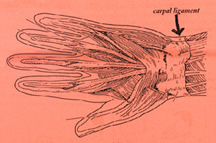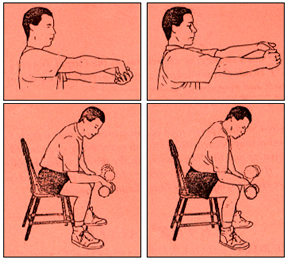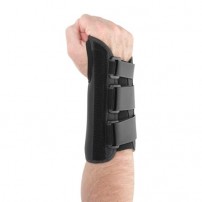Carpal Tunnel
 Carpal Tunnel Syndrome may be the most publicized example of a common work force problem; it’s an injury that results from a series of factors that occur over a period of time. Carpal Tunnel Syndrome has received the most attention from the media—-it is serious, but it is only one example of many in the category of cumulative Trauma Disorders or CTS’s.
Carpal Tunnel Syndrome may be the most publicized example of a common work force problem; it’s an injury that results from a series of factors that occur over a period of time. Carpal Tunnel Syndrome has received the most attention from the media—-it is serious, but it is only one example of many in the category of cumulative Trauma Disorders or CTS’s.
Inside the wrist is a small channel or tunnel, known as the Carpal Tunnel (“Carpus” is Latin for “Wrist.”) Inside this tunnel passes a major nerve (the median nerve), several blood vessels and nine tendons. Bending or twisting the wrist can constrict this tunnel – like putting a kink in a garden hose.
Certain forceful wrist motions performed can cause pressure over a period of time. Swelling in the tunnel may occur with the median nerve being compressed or pinched. The result is a numbness and tingling sensation in the thumb, index, middle, and half of the ring finger. If the problem progresses, loss of strength in the hand can also develop. These are classic symptoms of Carpal Tunnel Syndrome.
Cumulative Trauma Disorders (CTD’s) can show up in many areas of the body; back, neck, shoulder, elbows, wrists, and hands.
The principles of ergonomics applied to the tools, workstations, and environment in the workplace can reduce the likelihood of Carpal Tunnel Syndrome and CTD’s in general.
Prevention
If you are performing work that causes you to repeat wrist motions in the same manner over
long periods of time, TAKE A BREAK!!
 Stretch your wrist forward and backward for a minute or two. Second, spread your fingers and roll your wrist around for a couple of minutes. Third, if you use a computer, use a wrist rest for support. If you are using tools, make sure that they are designed to absorb shock and are made to conform to the wrist’s natural motions.
Stretch your wrist forward and backward for a minute or two. Second, spread your fingers and roll your wrist around for a couple of minutes. Third, if you use a computer, use a wrist rest for support. If you are using tools, make sure that they are designed to absorb shock and are made to conform to the wrist’s natural motions.
Exercise and strengthen the muscle of the forearm. Use small weights to do flexion and extension exercises or use Theraband or Theratubing for the same exercises.
Sometimes the use of a specially designed Carpal Tunnel Wrist support helps in reducing the discomfort after the problem has begun. This provides the wrist with the proper support in the proper anatomical position.

